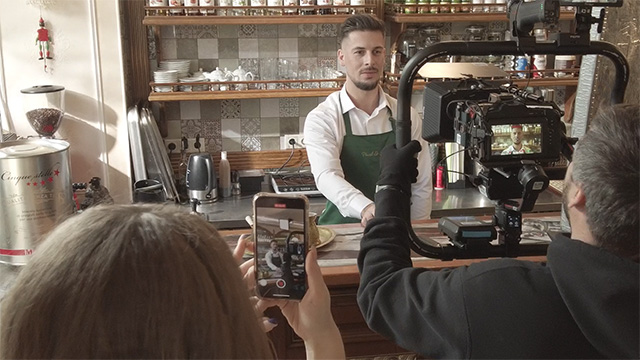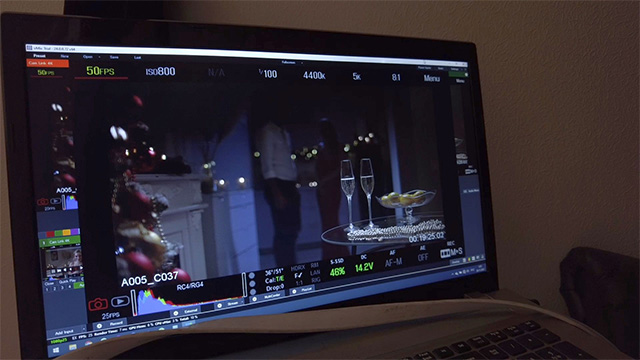Video Marketing or Watch Until the End
The most viewed (but not the most interesting) video in the entire history of video hosting is the clip featuring the song Baby Shark by the South Korean company Pinkfong. It has garnered more than 10 billion views. TEN BILLION!!! There are only about 8 billion people on Earth. Which means that every single person living on our planet has watched this video at least once.
This example can be cited to those who believe that video marketing is just a toy for bloggers. In reality, video marketing is not just an excellent tool for promoting anything — a product, service, brand, idea, and so on. Today, it is arguably the main channel of interaction with the audience. Effective, clear, and accessible to virtually everyone. A true must-have for any business. To be convinced of this, just take a look at last year’s statistics:
84% of people decided to purchase a product after watching a video about it.
93% of companies acquire customers through video on social media.
In the end, let’s recall the channels through which humans perceive information: 60% — visual, 30% — auditory, and 10% — semantic. Simply put, people prefer watching to reading. The meaning of a message is absorbed more effectively when it is reinforced with an image. And if you combine it all — you get nothing less than His Majesty Video Content.
With a cool video, you could wake up famous. Although fame does not necessarily bring wealth and a good name. That’s why, before you start posting videos, think carefully about why you are doing it.
Like any other marketing tool, video marketing has its own goals and objectives. It is these that determine the type and format of video content, as well as the channels for its distribution. That is, for a video to be as effective as possible, you must first define what exactly you want to achieve by using it in your marketing strategy. Even if all your goals and  objectives can easily fit into a single request — “urgently sell a collection of summer dresses” — that does not mean that just any video will instantly fulfill your wish. Who exactly do you intend to sell your dresses to? Flighty teenage girls? Very busy businesswomen? Women who still remember the names of all the General Secretaries of the CPSU Central Committee? It is important to understand “at the outset” who your target audience is — that is, to whom you want to offer your product or service first and foremost. The more carefully you define your objectives and audience, the more accurately and deeply your video will hit the target. And it will become clear what to shoot, how to frame it, where to post it, and how to promote it.
objectives can easily fit into a single request — “urgently sell a collection of summer dresses” — that does not mean that just any video will instantly fulfill your wish. Who exactly do you intend to sell your dresses to? Flighty teenage girls? Very busy businesswomen? Women who still remember the names of all the General Secretaries of the CPSU Central Committee? It is important to understand “at the outset” who your target audience is — that is, to whom you want to offer your product or service first and foremost. The more carefully you define your objectives and audience, the more accurately and deeply your video will hit the target. And it will become clear what to shoot, how to frame it, where to post it, and how to promote it.
In general, despite the apparent ease of creating and using video content for selfish purposes, producing quality video for social media is practically no different from filmmaking. Of course, by now there are plenty of feature-length films shot on a smartphone. But apart from using a smartphone instead of professional motion picture cameras, their production is filled to the brim with all the events, phenomena, and processes inherent to the making of a real, full-fledged movie.
Video content, like cinema, comes in various genres.
A nimated video — an excellent tool for content designed to illustrate hidden or implicit processes. After all, graphics can demonstrate anything — any fantasies, implementations, and mechanisms. Animated animals can speak and harmlessly depict human traits (let’s remember our beloved Zootopia). Punctuation marks, emojis, and icons above characters’ heads can show emotions and thoughts without unnecessary words or screen time. Graphic charts and infographics vividly demonstrate the structure of processes.
nimated video — an excellent tool for content designed to illustrate hidden or implicit processes. After all, graphics can demonstrate anything — any fantasies, implementations, and mechanisms. Animated animals can speak and harmlessly depict human traits (let’s remember our beloved Zootopia). Punctuation marks, emojis, and icons above characters’ heads can show emotions and thoughts without unnecessary words or screen time. Graphic charts and infographics vividly demonstrate the structure of processes.
Documentary video — like nothing else, it can convey to the viewer what is happening with maximum authenticity. Real people, real events, real stories. It is this authenticity, this lack of artifice, that inspires trust in a brand.
Reportage video —  very similar to documentary, but unlike it, it has no script. Usually a report is conducted from the scene of events and shown sequentially as things happen. As video content, reportage can be either informational or image-driven, depending on the objectives set for the clip. For example, the opening of a new store can be shown simply as the appearance of another retail outlet for the company, or it can be presented as a social event gathering the city’s most stylish people, for whom the brand’s clothing is a hallmark of impeccable style and quality.
very similar to documentary, but unlike it, it has no script. Usually a report is conducted from the scene of events and shown sequentially as things happen. As video content, reportage can be either informational or image-driven, depending on the objectives set for the clip. For example, the opening of a new store can be shown simply as the appearance of another retail outlet for the company, or it can be presented as a social event gathering the city’s most stylish people, for whom the brand’s clothing is a hallmark of impeccable style and quality.
Dramatic video — clips shot from a pre-written script, with a director and acting.
clips shot from a pre-written script, with a director and acting.
Educational video — training videos in which a company can share its knowledge while not necessarily pushing the use of its product. In a sense, educational video can be considered native advertising. It’s not mandatory to showcase a product or service — you can use a company employee as an expert teaching viewers skills related to the company’s field of work.
A dvertising video — these are the very clips we constantly see literally everywhere — television, the internet, outdoor screens teeming with ads blending into a single dizzying video mash. Yes — advertising is annoying, yes — there’s a lot of it, but it works despite everyone’s squeamish attitude toward it.
dvertising video — these are the very clips we constantly see literally everywhere — television, the internet, outdoor screens teeming with ads blending into a single dizzying video mash. Yes — advertising is annoying, yes — there’s a lot of it, but it works despite everyone’s squeamish attitude toward it.
The genres listed here are not canon, but rather an attempt to somehow systematize video content. If we classify videos by their content, a whole new range of types immediately appears. Review videos, how-to videos, interviews, testimonials, case studies, presentations, viral videos, news — all of these are tools of video marketing.
A video marketing strategy can include the use of all types of video content. The key is that it must be appropriate, fit into the overall concept of brand promotion, and align with its philosophy and established tactics of interaction with the consumer — both potential (“cold”) and loyal (“warm”).